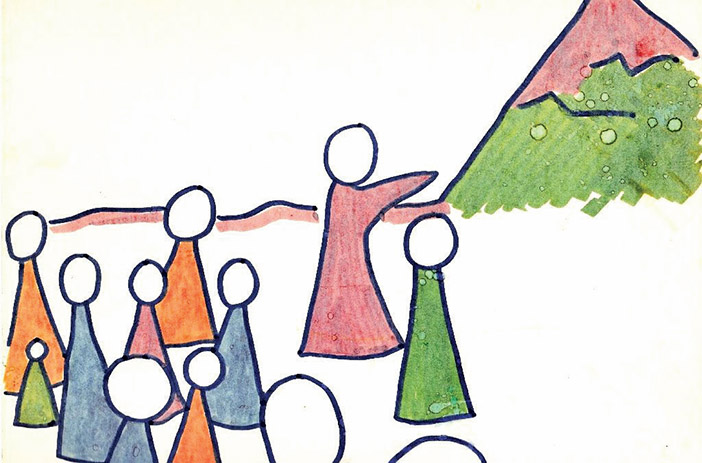
The first Rashi in our parsha is fairly famous, as his question (quoting the Sifra) of “what connection does Shmita have with Har Sinai?” has become part of the vernacular in frum circles, meaning “what does one thing have to do with another?” Yet, since the very next line is “weren’t all the commandments said at Sinai,” we see that every mitzvah has a connection with Sinai. Rashi’s question is therefore not what one thing has to do with the other, but what unique connection is there between Shmita and Sinai that Sinai is mentioned regarding this mitzvah.
It would also seem that the question is not really why Har Sinai is mentioned here, as most of the mitzvos taught earlier in Sefer Vayikra were taught to Moshe in the Mishkan. Since Behar and Bechukosai were taught earlier, at Sinai, before the Mishkan was built, the Torah had to tell us that the mitzvos in these parshiyos were taught at Sinai. The question is therefore specifically about Shmita: why was it the first of those mitzvos to be taught here, causing Har Sinai to be mentioned along with it?
However, the supplied answer doesn’t really address this question. The Sifra’s answer is that just as we see that all of Shmita—the general law and its details—was taught at Sinai, the same is true for every mitzvah. But whichever mitzvah the Torah chose to teach first here would indicate the same thing, provided its full details were taught as well. If the question is about the uniqueness of the connection between Shmita and Sinai, having the full description taught there does not answer the question, as every mitzvah has this quality.
After quoting the Sifra, Rashi adds an additional thought, pointing out that when Moshe repeated the laws of the Torah to the next generation before he died (in Sefer Devarim), he did not teach them the laws of not working the land in the seventh year (i.e., Shmita). Although our above question can be extended here as well, by adding this element to the mix Rashi is telling us why Shmita was the mitzvah chosen to be placed next to the words “Har Sinai.”
Shmita is only kept in the Land of Israel. Until we got there, though, these laws had no practical application. Numerous laws were taught at the Plains of Moav shortly before we entered the land. It would seem more appropriate to teach the laws of Shmita there too, as they would have to be implemented soon after. Why would the Torah avoid teaching it there, choosing instead to tell us about it at Har Sinai? This may have been the question the Sifra is asking: “What connection is there between Shmita and Har Sinai that these laws were fully explained at Sinai, rather than at the seemingly more appropriate Plains of Moav?” The Sifra answers that teaching us these laws here teaches us that every mitzvah—even those that were not yet relevant—was taught in its entirety at Sinai. It is precisely because the laws of Shmita were less relevant at Sinai that teaching us them there indicates that all mitzvos must have been taught there too. According to Rabbi Akiva (whose opinion this Sifra is following, see Sotah 37b), all mitzvos—their general concept along with the complete explanation—were taught at Sinai, repeated in the Mishkan, and taught for a third time by the Plains of Moav. The Torah doesn’t record the full lessons taught at each of these three locations, allowing us to learn their details from the parts of each lesson that it does include.
By recording the full Shmita lesson at Har Sinai (and leaving out the third one completely), the Torah is showing us that even those mitzvos that weren’t recorded as being fully explained at Sinai were in fact taught there—in their entirety.
By Rabbi Dov Kramer
Rabbi Dov Kramer, known to New York-area sports fans for his role as executive producer at WFAN radio, runs the 8 a.m. Nusach Ashkenaz minyan on Shabbos mornings at The Tif in Passaic. He wrote a weekly dvar Torah for 15 years, which can be found at RabbiDMK.WordPress.com and/or AishDas.org/ta.











